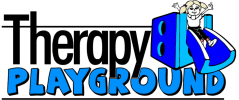“The study and treatment of oral and facial muscles as they relate to speech, dentition, chewing/bolus collection, swallowing, and overall mental and physical health”
– S.R. Holtzman
Orofacial Myofunctional Disorders (OMDs) interrupt the growth and development of the muscles and bones of the face and mouth. This results in poor function during eating, swallowing, talking and breathing. Children, teenagers and adults are all affected by OMDs.
Signs and Symptoms of OMDs
- Breathing through the mouth
- Minimal tongue movement
- Messy eating and drinking
- Slow and unnatural eating patterns
- Tongue pushing past teeth during eating, drinking and talking
- Dental issues such as overbite, under bite, and open bite
- Speech sound disorders
- Lisping (tongue pushing through teeth and lips during speech)
- Drooling past the age of 2
- Negative oral habits (thumb sucking, nail biting, tongue sucking, finger sucking)
- Open mouth resting posture (lips apart)
- Tongue rests in forward position and between the teeth
Causes of Orofacial Myofunctional Disorders
Although there is not a single known cause for the development of Orofacial Myofunctional Disorders, there are a number of factors that contribute to OMDs. These include:
- Difficulty breathing through the nose, resulting in the need to breathe through the mouth. This is typically due to chronic allergies, enlarged tonsils/adenoids, or other structural abnormalities of the nasal passages.
- Tongue tie, limiting the mobility of the tongue
- History of negative oral habits (thumb sucking, finger sucking, etc.)
- Prolonged use of pacifier or sippy cup
- Syndromes that affect the growth of mandible, maxilla, palate, etc.
Evaluation of Orofacial Myofunctional Disorders
One of our highly qualified Speech-Language Pathologists will complete a comprehensive examination of the function of the oral and facial structures during speaking, eating, drinking and swallowing. The SLP may recommend a referral to an ENT, allergy doctor or Orthodontist to assist in the treatment process.
Treatment of Orofacial Myofunctional Disorders
- Treatment will incorporate exercises that target the facial and lingual (tongue) muscles along with behavioral modifications to achieve adequate placement of lips, jaw and tongue at rest and during speech, drinking, feeding and swallowing tasks. Treatment will focus on elimination of tongue thrust resulting in a lisp and/or reverse swallow pattern. Exercises are completed in a hierarchy to obtain the most success of reversing inadequate muscle performance.
- Elimination of negative oral habits (use of pacifier, finger/thumb sucking, nail biting, etc.) must take place prior to beginning treatment. SLP can work with family to provide strategies/resources to help eliminate these behaviors.
- Patients will be assigned homework exercises to complete daily. The patient’s compliance and follow-through with homework is crucial in the success of treatment.
- Treatment can begin as early as 5-years-old and is successful through adulthood.
- The time frame to complete treatment is dependent upon the patient’s individual needs. Most patients are seen in the clinic 1-2 times per week. Each session is 30 minutes.
